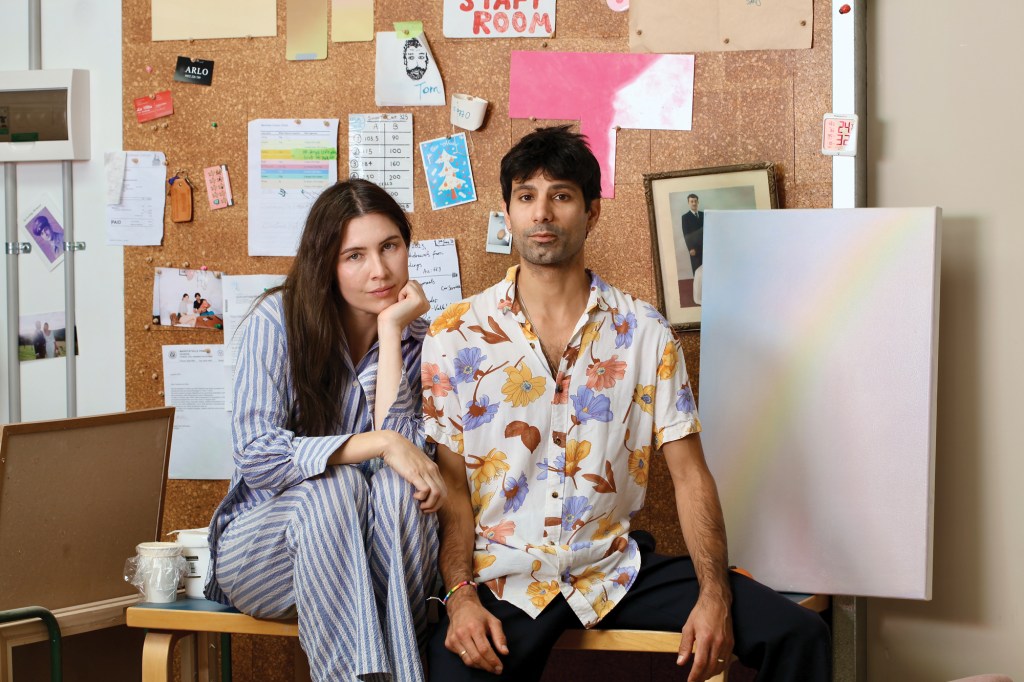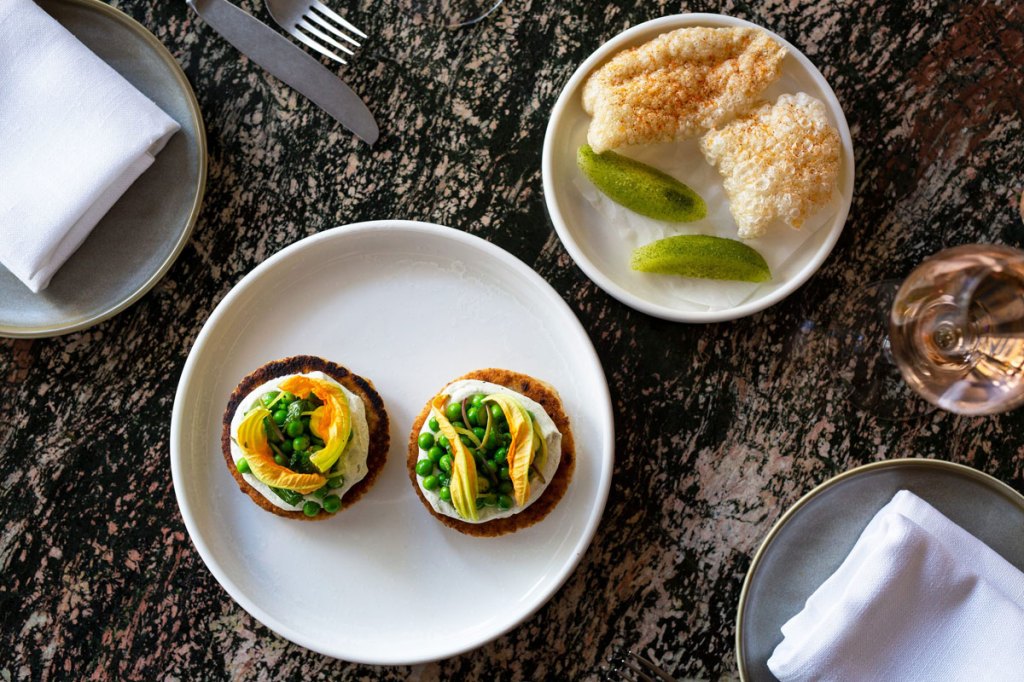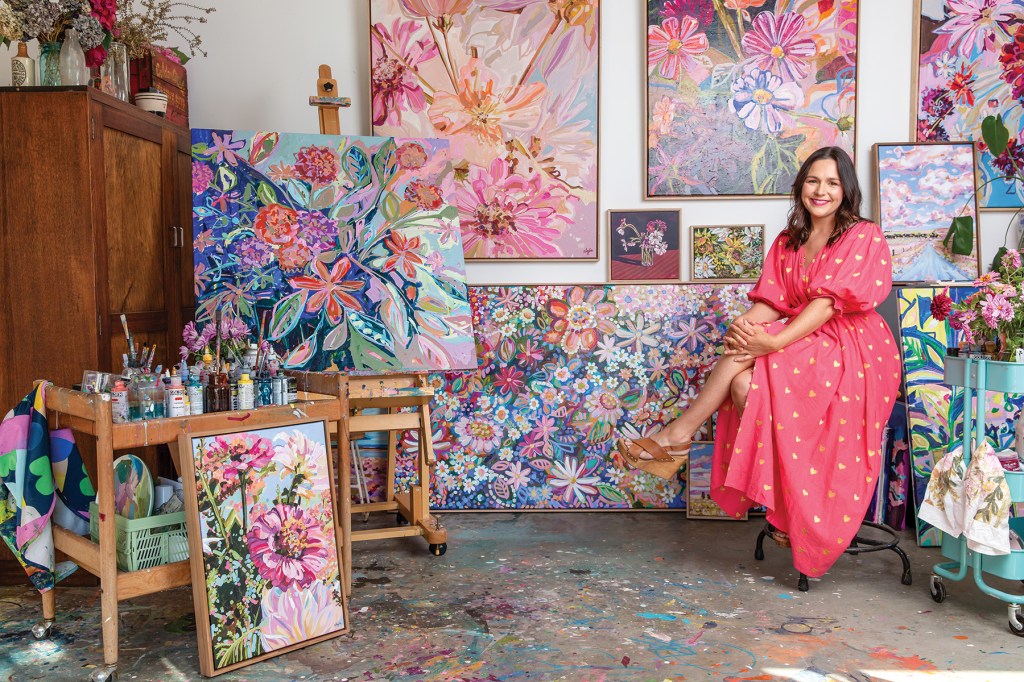Meet SA’s most outstanding designers
In the first of a series, SALIFE asks local designers to share their artistic philosophies, their inspirations and favourite SA designs.

Isabella Wood and Aldo Mignone
Furniture design
Studio Mignone’s head-turning furniture and objects are designed by Isabella Wood and Aldo Mignone. The pair has worked with terrazzo, marble and concrete, and their current designs use resin and glass to make their bubble gum-inspired chessboards and pastel-toned coffee tables.

Where do you find inspiration for your work?
Isabella: We never look to mood boards or other designers as that would be devastating for our ego. Inspiration always comes from well outside the design realm. To be honest, it’s hard to pinpoint. We let the subconscious milieu of everything we take in do the work and never dare shine a light on it. For example, discarded chewing gum is my current muse.
What does good design mean to you?
Aldo: Good design as a practice is somewhat reductive. A bit like crafting a sentence. You have to Hemmingway it: you want to trim it back to its most essential nature. It’s problem solving too. If you must interrupt a beautiful sweeping form to make the object functional and work properly, I think sometimes those ideas can be abandoned because there will be other ways and other things to explore where you don’t have to compromise those elements to achieve your idea.
What is a piece of South Australian design you admire?
Can we pick three? We love everything Genesin Studio. Next, the glowing menu board from the Sans Arc-designed Messina store. It radiates good feelings. And the Daniel Emma Soft chair. It just hits right in every element.
What is your design philosophy?
Isabella: These two questions; Does this feel exciting? Followed closely by, has it been done? It’s very binary.
Aldo: Our real goal here is to put things into the world that are interesting. We want to be playful and find people who like our work, and that is about it.

Georgie Shepherd
Interior design/residential
Georgie Shepherd Interior Design is responsible for some of SA’s most stunning commercial and private interiors, always displaying a softness that comes through with clever attention to materiality, including Bird in Hand’s LVN restaurant and Sequoia’s lodge.

Where do you find inspiration for your work?
I tend to look outside Australia and have a good library of design and architecture books. Travelling is a big one, I find that I file away all the wonderful sights, colours and textures along the way and draw upon them when the need arises. I visited Milan for Milan Design Week this year, which was extremely inspirational. The narrative our clients share also influences our work, as do the history and architectural details of a building.
What does good design mean to you?
You might like
I have always resonated with a Kelly Wearstler quote: “Great design can inspire us, evoke emotion and elevate daily experiences”.
What is a piece of South Australian design you admire?
If I had to choose one that I have always admired it would be Khai Liew. Not only for his designs across furniture, lighting, objects and interiors but for the way he conducted himself daily in his business and how he influences the design community.
Pick one of your designs that encapsulates your aesthetic and describe it to us?
As a studio we try not to have a particular aesthetic, but let each project lead us in a direction. I do however feel that one of our recent hospitality projects encapsulates my personal aesthetic and that would be LVN restaurant at Bird in Hand Winery (pictured above). This project sums up my love for natural materials and for creating inviting spaces.

James Walker
Object/furniture design
This past year, homewares designer James Walker has been a finalist in the VIVID Emerging Designer Awards and Workshopped’s Australia’s Next Top Designer.

Where do you find inspiration for your work?
Nature is a profound source of inspiration for me. There’s something about the organic, abstract forms found in the natural world that resonate deeply with my design aesthetic. I often find myself drawn to these shapes, and they become the foundation for many of my designs, whether in their entirety or in specific components.
What does good design mean to you?
To me, good design is about finding harmony between form and function. It’s about creating something that not only looks pleasing but also serves a purpose in a way that feels natural and intuitive. Great design should forge a lasting connection with the people who use them.
What is a piece of South Australian design you admire?
I’m a huge fan of Khai Liew’s Hall Stand from 2019. It’s a beautiful example of how design can straddle sculptural art and practical function. The piece features round, soft, and perfectly proportioned forms – all characteristics that I aim to reflect in my own work. I appreciate how Khai managed to reinvent the traditional hall stand in a way that feels fresh and contemporary, while maintaining a deep respect for craftsmanship.
Pick one of your designs that encapsulates your aesthetic and describe it to us.
The Query Lamp is a piece that encapsulates my aesthetic and design principles. It’s crafted from Douglas Fir, which originally served as a structural beam in the 20th century. The lamp highlights the history of its materials, celebrating the wear and tear they’ve endured over time. This piece is a statement on prioritising quality over affordability and highlighting the importance of sustainable design practices and the appreciation of materials. The organic, carved components of the lamp bring a sculptural quality to its functional purpose, making it not just a light source but a piece of history and art.

Dean Toepfer
Object design
Furniture and lighting designer Dean Toepfer has studied in France and worked in Rotterdam, more recently establishing Mixed Good Studios with friend and business partner, Andrew Carvolth. The multidisciplinary space fosters the diverse practices of designers, artists and craftspeople. Dean has created a range of furniture and homewares, including public furniture along King William Road, and his delightful Pop Bottle Opener.

Where do you find inspiration for your work?
Inspiration comes from all sorts of places; it’s woven into the environment where I live and work, the conversations I have with friends and colleagues, the books and magazines I read, and the music that fills my space. Both positive and challenging experiences shape my perspective and influence how I create. I draw from all these elements, letting them inform and guide my design process. The act of being creative, solving problems, and transforming intangible ideas into tangible objects continually fuels my inspiration.
What does good design mean to you?
Good design should be thoughtful and intentional, where every detail, material choice and form serves a purpose. The balance of functionality, beauty and innovation makes a design not only good but truly meaningful.
What is a piece of South Australian design you admire?
I am fortunate to have met and become friends with many creatives since moving to Adelaide and whose works I really admire. I’m slowly acquiring a home collection from the likes of Andrew Carvolth (furniture), Liam Fleming (glass), Zaachariaha Fielding (art), Keryn Levy (ceramics), Luca Lettieri (furniture/sculpture) Connie Augoustinos (ceramics), Sam Gold (ceramics) and Jon Goulder (furniture).
What is your design philosophy?
My philosophy is rooted in the belief that design should seamlessly blend functionality and aesthetic appeal. I see design as more than just creating objects; it’s about breathing life into inanimate materials and crafting pieces that resonate with their environment and the people in-teracting with them. For me, design is a meticulous exploration, whether it’s experimenting with materials, balancing form and function, or ensuring that every detail contributes to the overall story of the piece. Ultimately, my goal is to design objects that connect emotionally, transforming spaces and enhancing the lives of those who experience them.

Ailsa Paterson and Jeremy Allen
Theatre design
State Theatre Company South Australia
Subscribe for updates
Ailsa Paterson designs for theatre, opera, dance, cabaret and events, and has had work tour around the country and overseas.

What does good design mean to you?
Good design means fulfilling the demands of the script and the brief, working harmoniously with the spatial parameters, meticulous modelling and remodelling and striving for individuality. It is a collaborative process relying on instinct and innovation.
What is a piece of SA design you admire?
I love the SAHMRI building – it has become such an iconic piece of Adelaide architecture. I like the way it disrupts the series of bland buildings along North Terrace.
Pick one of your designs that encapsulates your aesthetic and describe it to us?
My design for Girls and Boys by Dennis Kelly, directed by Mitchell Butel and starring the incredible Justine Clarke, encapsulates my design aesthetic. The set relies on a magical realist design style, inspired by the futuristic architecture scapes of Ana de Santos. The colour palette reflects the stereotypical colours of a boy’s bedroom and a girl’s bedroom but is lifted into a kind of stylised gallery space. The space is a liminal zone, with darkness beyond the arched doorways and boxed memories housed in arched shelving units. At the end of the piece, after a devastating revelation, a collection of night lights hidden amongst the objects in the shelves are illuminated as the final image that the audience is left with.

Jeremy Allen is a set and costume designer for State Theatre Company South Australia and Sydney Theatre Company.

Where do you find inspiration for your work?
Everywhere, really. Stage design is so reflective – the diversity of the work allows for lots of avenues for inspiration. You could be working on designing a play set in the 1950s in Pittsburgh and concurrently designing another play set in a modern Singapore. That’s part of why I enjoy the work so much – you’re constantly finding new sources for inspiration, new resources, new insight.
What does good design mean to you?
Often it’s about the optimisation of every constraint, particularly when it comes to anything dimensional, like architecture, product design or set design, even costume design. Even in the most detailed and decorated of set designs I’ll start from a place of minimalism. At its core, what does the space feel like? What emotions does it evoke?
What is a piece of South Australian design you admire?
I’ve got a soft spot for a lot of Adelaide’s mid-century buildings – Faraway House on Franklin Street has always been a favourite of mine. I love Pink Moon Saloon – the tiny cabin-inspired bar squished into the CBD metropolis.
What is your design philosophy?
All my work stems from the idea that spaces can be inherently emotional – and this can be manipulated in countless ways. Through light, volume, architecture, material, colour, smell and temperature. A theatrical experience should be a sensory one, and not necessarily overtly so. The best experiences you have will be shaped by the spaces around you and the evocation of these memories through art and theatre are powerful. Powerful enough to change minds, inform and challenge – as art always should.

Des Burns
Industrial design
founder, Design Brains
Design Brains is a product design and development firm based in Thebarton. It won a 2023 Australian Good Design Award for its range of smart bicycle lights, which will make their global debut this year. The DING bike lights are all made in Adelaide and designed during Covid-19, when customer projects were few and far between.

Where do you find inspiration for your work?
Everyday experiences, including the challenges people face and the ways they interact with products, offer valuable insights. Observing and understanding these interactions can lead to practical and user-centered designs.
Learning from past iconic designs and understanding why they remain relevant and timeless is invaluable. Dieter Rams, the German industrial designer, is a significant inspiration to me.
His work from the 1970s embodies the principle of ‘less is more,’ which is a core element of all his iconic designs.
What does good design mean to you?
To me good design means creating solutions that seamlessly integrate form, function, and happy user experiences. It’s about more than just aesthetics though; it’s about crafting something that feels intuitive, endures over a long time, and performs its intended purpose effectively without thinking too much about it.
What is a piece of South Australian design you admire?
The Adelaide Festival Centre, designed by John Morphett in 1973, is a favourite for its architectural design. I love its bold, modernist form which has stood the test of time and remains an icon for Adelaide. I always liked that it was funded by a public appeal that reached its target within a week, remarkable achievement for the 1970s.
What is your design philosophy?
A deep understanding of the customer’s needs is essential to me, not just the engineering behind the design. Form and function have to be central and I ensure both receive equal attention for a product design to be truly effective. I typically start with multiple design concepts, focusing on minimising parts and scaling the features to achieve a harmonious, golden ratio outcome. This process is to ensure that the final design aligns with my philosophy of optimal simplicity.

This article first appeared in the October 2024 issue of SALIFE magazine.

